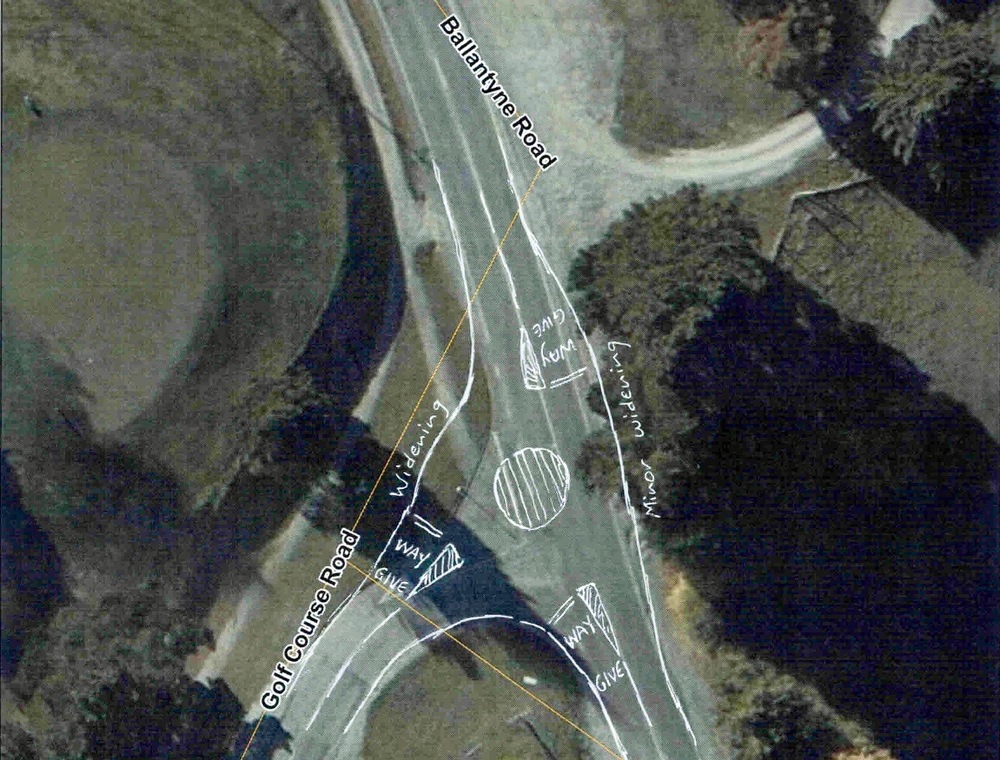Club frustrated by lack of progress on pedestrian crossing
Diana Cocks
12 January 2021, 5:06 PM
 Concerns are increasing for the safety of pedestrians and cyclists using the crossing opposite the golf club. PHOTO: Wanaka App
Concerns are increasing for the safety of pedestrians and cyclists using the crossing opposite the golf club. PHOTO: Wanaka AppThe Wanaka Golf Club (WGC) says it has put the Queenstown Lakes District (QLDC) on notice that it will be held responsible for any accidents at the pedestrian crossing on Ballantyne Road near the golf course.
WGC board of directors chair David Smallbone said the board has been expressing its concern to the council about the safety of the crossing for years - to little effect.
Last year the board sent a strong letter to the Wanaka Community Board (WCB), the mayor and the QLDC reiterating safety concerns and holding them accountable for a lack of progress.
David said the club’s board was advised in autumn last year the council was taking the safety issues seriously and it asked the board to be patient until new concept plans had been drafted providing a short-term fix.
The lack of progress was raised once again by WGC members at its annual general meeting in November, David said.
The club has more than 1000 members who play 40,000 to 50,000 rounds of golf each year utilising the Ballantyne Road crossing point between the front and back nine holes.

A roundabout concept proposed by the golf club to council for the Ballantyne/Golf Course Road intersection. PHOTO: Supplied
Some inexpensive and simple actions could be taken immediately to improve safety, David said.
The club had asked for “at the very least” bigger and better signage to indicate the crossing point to Ballantyne Road traffic, but ideally widening the road and inserting a central safety refuge would be the best solution, he said.
In addition to the club’s members, more and more non-golfing pedestrians and cyclists were choosing to use the golf course crossing point to connect to active transport trails along Ballantyne Road towards Three Parks and along Golf Course Road, rather than attempting to cross at the intersection of those roads, he said.
David said that although improving the safety of the pedestrian crossing was the club’s primary goal, he acknowledged that the crossing was just one element of a bigger picture which included resolving the “pandemonium” at the intersection of Golf Course and Ballantyne Roads.
He had been advised the WCB was investigating introducing slip lanes for turning traffic as a short-term solution to ease congestion, but David said slip lanes would not slow the traffic driving straight through the intersection on Ballantyne Road nor provide a safe crossing point.
He believed a roundabout was the best solution at that intersection as it would slow the traffic, mitigate the congestion, improve safety for all users and provide for the future connectivity to Three Parks.
Last year the WCB approved the naming of Sir Cliff Skeggs Drive, a major arterial road yet to be constructed through Three Parks, which will connect Ballantyne Road to Riverbank Road.
A WGC member and experienced planner drafted two roundabout options; one addressing the future road into Three Parks and incorporating an underpass; the other a proposal achievable now which could incorporate the current pedestrian crossing. The board forwarded both options to the council but they were rejected, David said.
QLDC spokesperson Jack Barlow confirmed the council was considering widening the roads to incorporate slip lanes and introducing “a signalised crossing” (like the pedestrian light on Frankton Road near the Queenstown airport) but located closer to the golf club’s entrance than the current crossing point.
He said these lower cost options could be included in the WCB’s minor improvements programme either this financial year or the next one. An underpass and roundabout are considered both complex and costly and are “most likely to be assessed through a business case and then prioritised under a future long term plan”.





